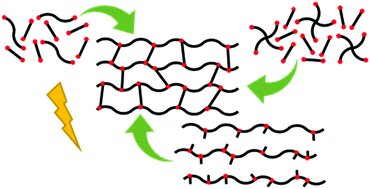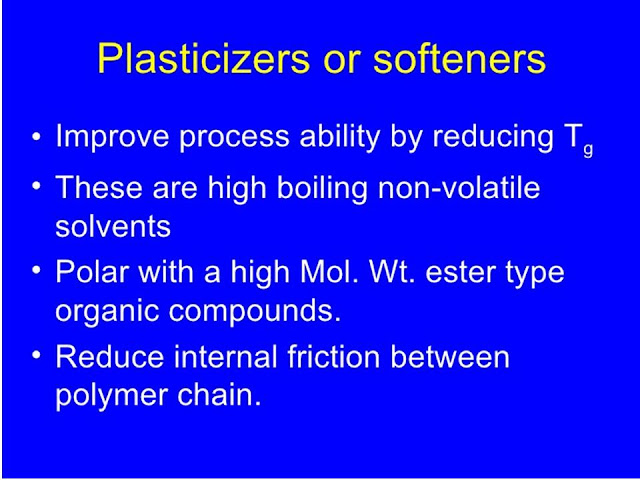Advanced Polymer Chemistry (Chem 5105):
Rheology is derived from the greek
word ‘rio’ which means flow and ‘lagea’ which means the study of, so Rheology is the study of a materials flow behavior under
applied deformation forces or stress now.
Rheology plays an essential role in formulating everything from cosmetics to food to inks and coatings.
It impacts all stages
of material use across multiple industries including production pumping,
storage, transportation, stability, and use application spreading and even
product performance.
The essential elements that affect the materials flows or deformation process are:
(i) Materials inner structure: how is the material
built or what is its molecular makeup,
(ii) Morphology: when molecules associate and make
bond with each other to form particle and their shape and size. Shape could be small
needle-like structures or bulky cotton-like structures or rod shapes or flower
or ball shape etc.,
(iii) Outside forces that stress the material which
causes it to deform. Their flow will behave differently under different stress,
(iv) Ambient conditions: Temperature
We can simply divide all materials into liquids and solids, but that's not really a good scientific approach.
In the real world materials are more complex from salad oil glue and shampoo to facial creams jelly and car tires. These materials should not be defined simply by two words (solid & liquid).
We define these materials better well
with Rheology. Most materials in the world are visco elastic- nearly every
material is made with a viscous portion and an elastic portion.
If a material is more viscous than it's a liquid, if a material is more elastic it's a solid.
Materials with the highest viscous portion are called viscous liquids or Newtonian liquids. At constant ambient conditions Newtonian liquids will always show the same viscosity no matter how they are stressed. Examples include water, oil etc.
Solid oil is viscoelastic liquids having liquids with an elastic portion. These materials exhibit a certain level of stiffness when they are stressed during flow.
Also when viscoelastic solids are
deformed by an outside force that is not too large, the inner structure of
these materials sticks together and tries to retain the materials original form.




Stress-Strain Behavior of Polymers
The mechanical properties of plastic materials depend on both the strain (change of length per unit length) and temperature.
At low strain, the deformation of most solids is elastic, that is, the deformation is homogeneous and after removal of the deforming load the plastic returns to its original size and shape.
In this regime, the stress (σ) [force/area] is proportional to the strain (ε):
Stress = Constant x Strain
or, σ = E ε
where, E is the tensile (or Young's) modulus of the plastic which is a measure of the stiffness of the material.
This relationship is known has Hooke's law. It means, when a plastic specimen is pulled at a (constant) strain rate the applied stress (or load) is directly proportional to the observed strain (or elongation).
The maximum stress up to which the stress and strain remain proportional is called the proportional limit.
If a plastic material is loaded beyond its elastic limit, it does not return to its original shape and size, i.e. a permanent deformation occurs.
With
increasing load a
point is eventually reached at which the material starts yielding. This point is
known as the yield point. A further increase in strain occurs without an increase in stress.
The maximum stress up to which the stress and strain remain proportional is called the proportional limit.
If a plastic material is loaded beyond its elastic limit, it does not return to its original shape and size, i.e. a permanent deformation occurs.
With
increasing load a
point is eventually reached at which the material starts yielding. This point is
known as the yield point. A further increase in strain occurs without an increase in stress.
https://www.youtube.com/watch?v=zc3b6LdDFtY&t=243s

Viscoelasticity is a type of deformation which consists of both elastic and viscous deformation.
Elastic deformation is a recoverable deformation which means the sample or the material can return to its original shape, once the applied force is removed.
Whereas viscous deformation is a non-recoverable deformation, which means applied force leads to a permanent deformation of the sample.
The example of elastic deformation is a stretching of rubber bands and example of viscous deformation is flow of fluids like water or honey.
Viscoelastic mechanical model:
For simplification, polymer is divided into an elastic component and a viscous component.
The deformation of the polymer can be described by combination of Hook’s and Newton’s law.
The linear elastic behavior is given by Hook’s law as,
σ = Ee ………………………..………………………….(1)
or, dσ/dt = E(de/dt) …………………………………………(2) , E is he elastic modulus, e is strain and σ is stress.
Newton’s law describes the linear viscous behavior through the equation:
σ = η(de/dt) ……………………………………………..(3)
η is the viscosity and de/dt is the strain rate.
A particularly useful method of formulating the combination of elastic and viscous behavior is through the use of mechanical models.
The two basic components used in the models are an elastic spring of modulus E and which obeys Hook’s law (Eq.1) and a viscous dashpot of viscosity, η, which obeys Newton’s law.
The various models that have been proposed involve different combinations of these two basic elements.
Standard linear solid
Itbeen demonstrated that the Maxwell model describes the stress relaxation of a polymer to a first approximation whereas the Voigt model similarly describes creep.
·
A logical step forward is therefore to find some
combination of these two basic models which can account for both phenomena.
·
In this case a Maxwell element and spring are in
parallel.
·
The presence of the second spring will stop the
tendency of the Maxwell element undergoing simple viscous flow during creep
loading, but will still allow the stress relaxation to occur.
·
There have been many attempts at devising more
complex models which can give a better representation of the viscoelastic
behaviour of polymers.
·
As the number of elements increases the
mathematics becomes more models only give a on a much complex.
·
It must be stressed that the mechanical models
only give a mathematical representation of the mechanical behaviour and as such
do not give much help in interpreting the viscoelastic properties on a given molecular
level.










































No comments:
Post a Comment